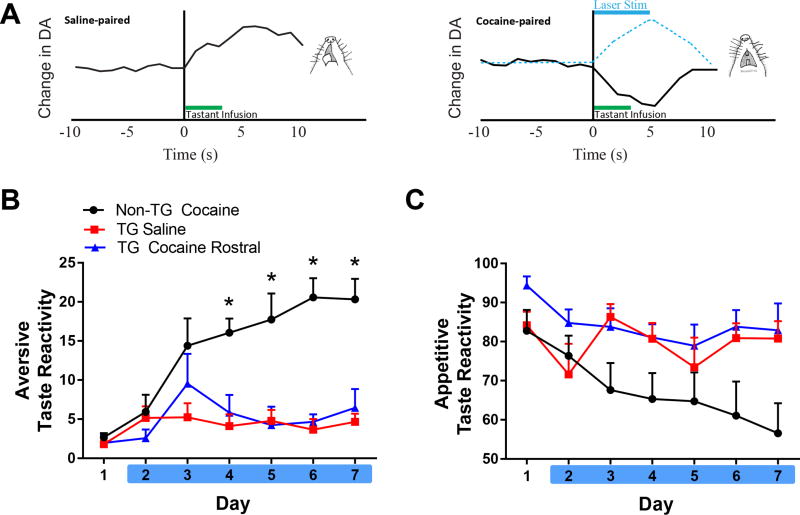Figure 3.
Optical activation of the VTA to rostral NAc pathway prevents negative affect associated with impending cocaine. A. Schematic illustrating DA release in the rostral-medial NAc shell relative to saline-paired or cocaine-paired tastant, derived from (10). Left: IO infusions of saccharin elicit appetitive taste reactivity responses (licking) concomitant with an increase in DA concentration in this region. Right: However, the emergence of aversive responses (e.g., gaping) along with shift to a decrease in DA concentration occurs when saccharin is paired with impending, but delayed cocaine. Here, optogenetics was used to elevate DA release during IO infusions (indicated by dashed blue line) to prevent the decrease normally observed following repeated taste-drug pairings. B. Non-TG Cocaine rats exhibited an elevation in aversive taste reactivity on days 4–7 (*p<0.05 vs. TG Saline and TG Cocaine Rostral) and optical stimulation prevented this increase. No significant differences were observed between TG Saline and TG Cocaine Rostral groups. C. Percent of appetitive responses over days across groups.

